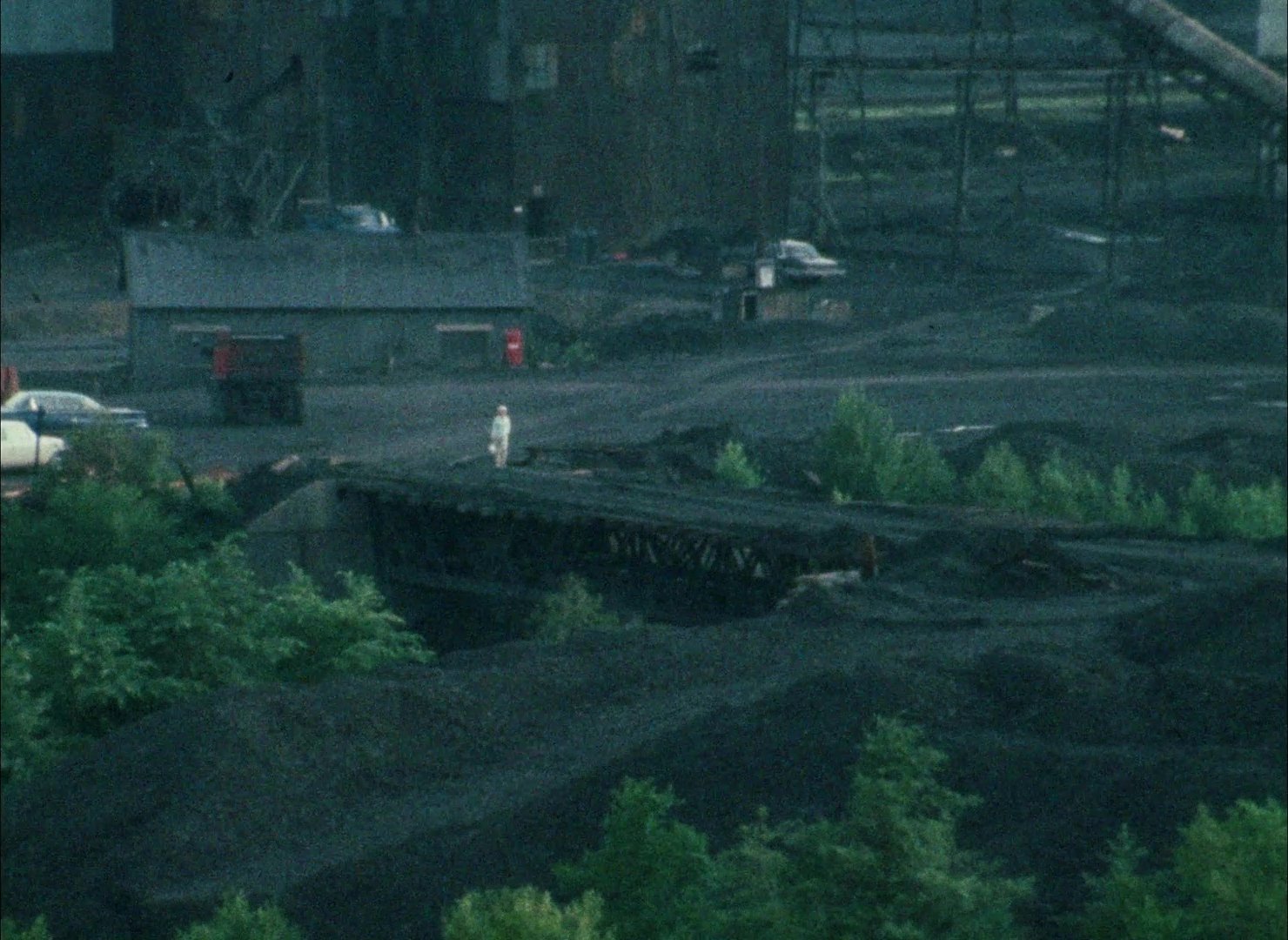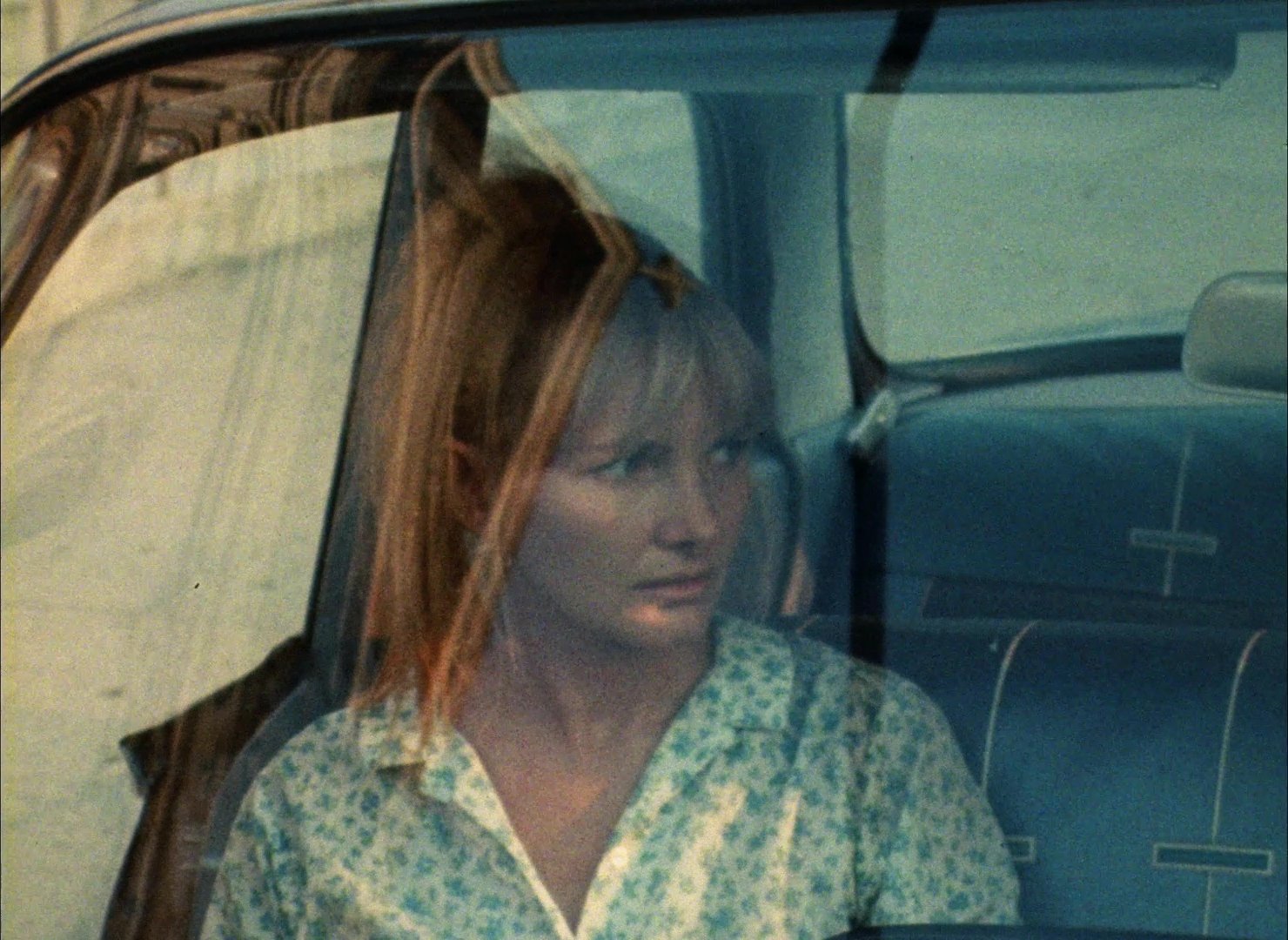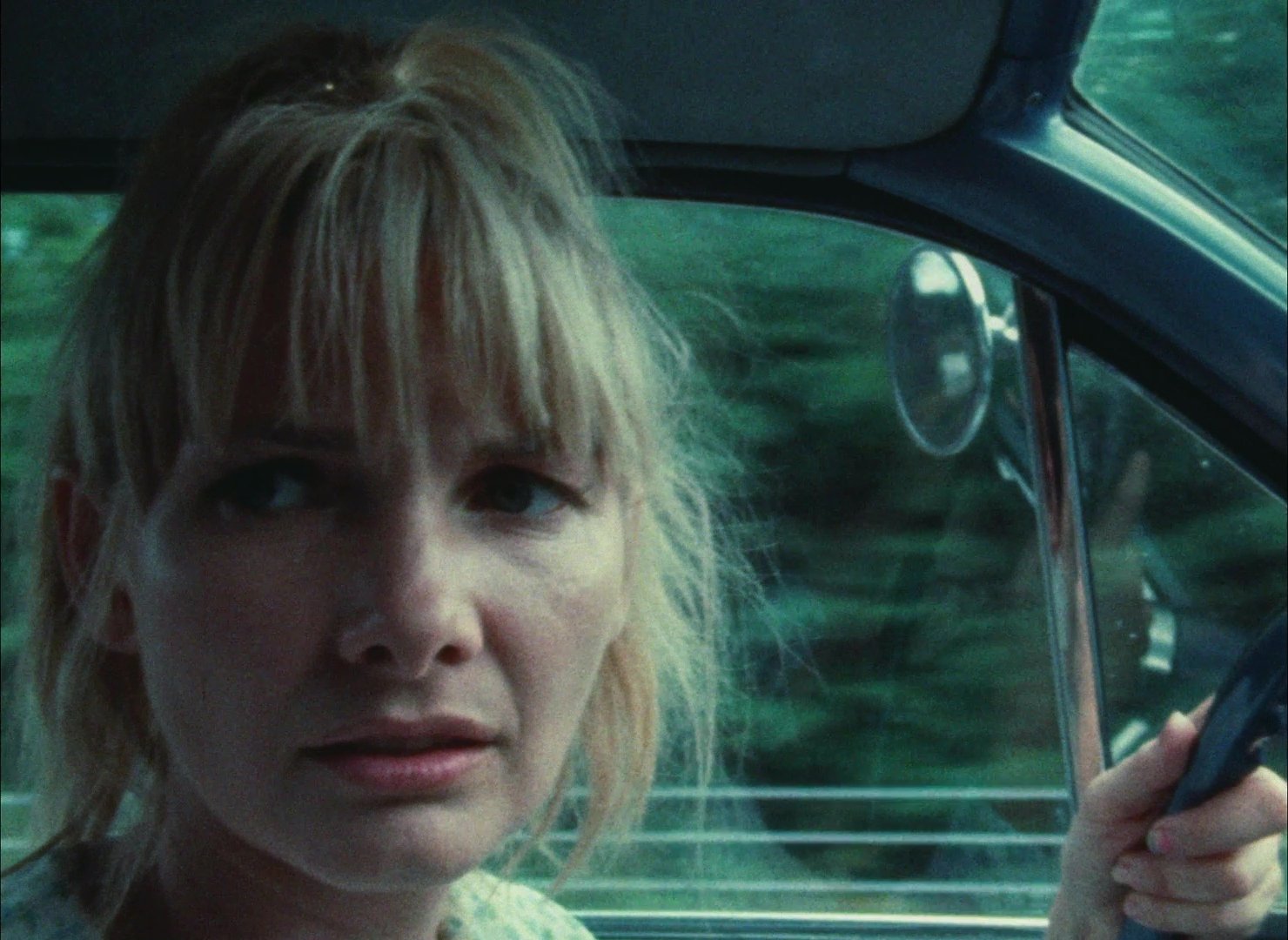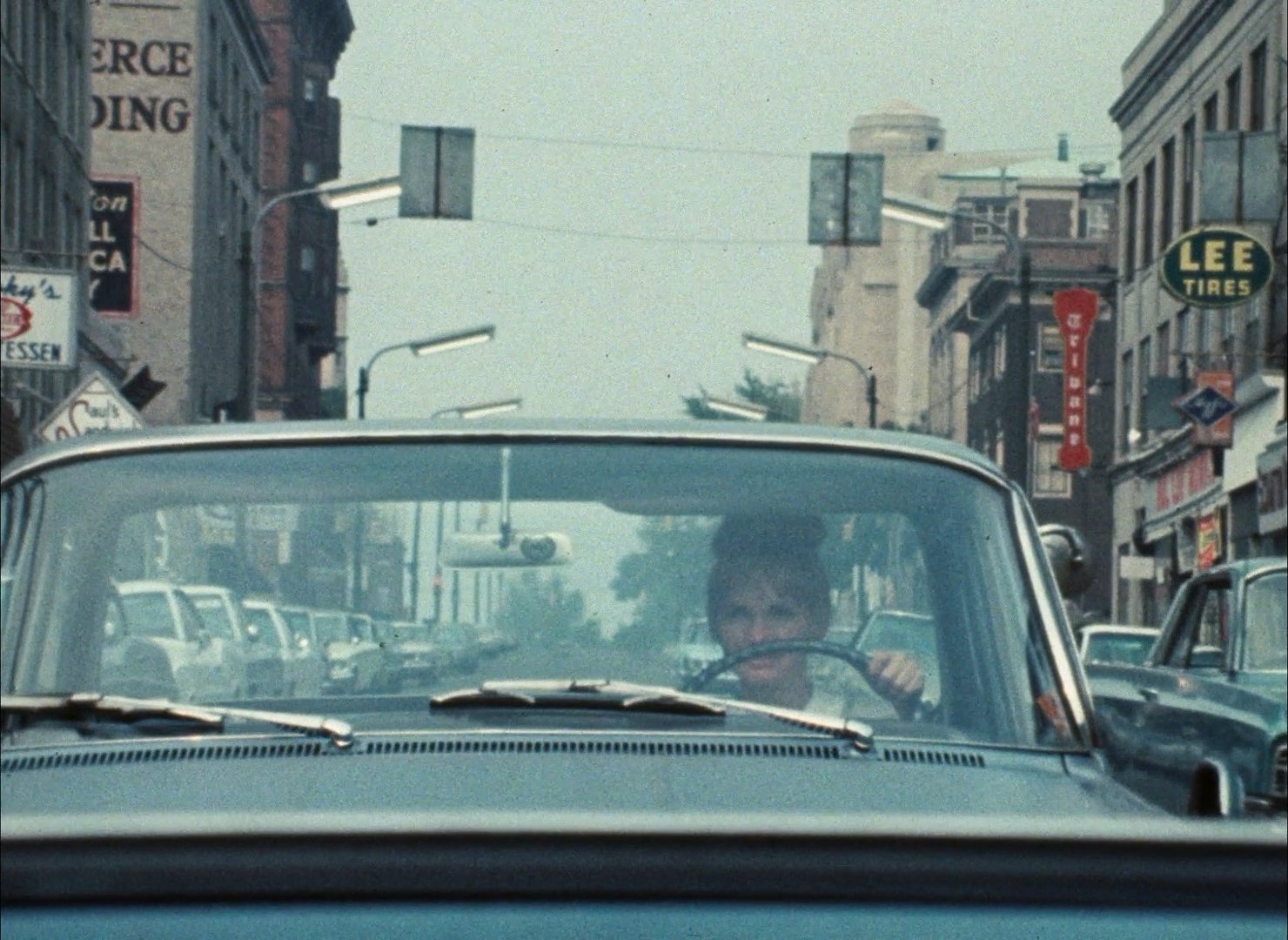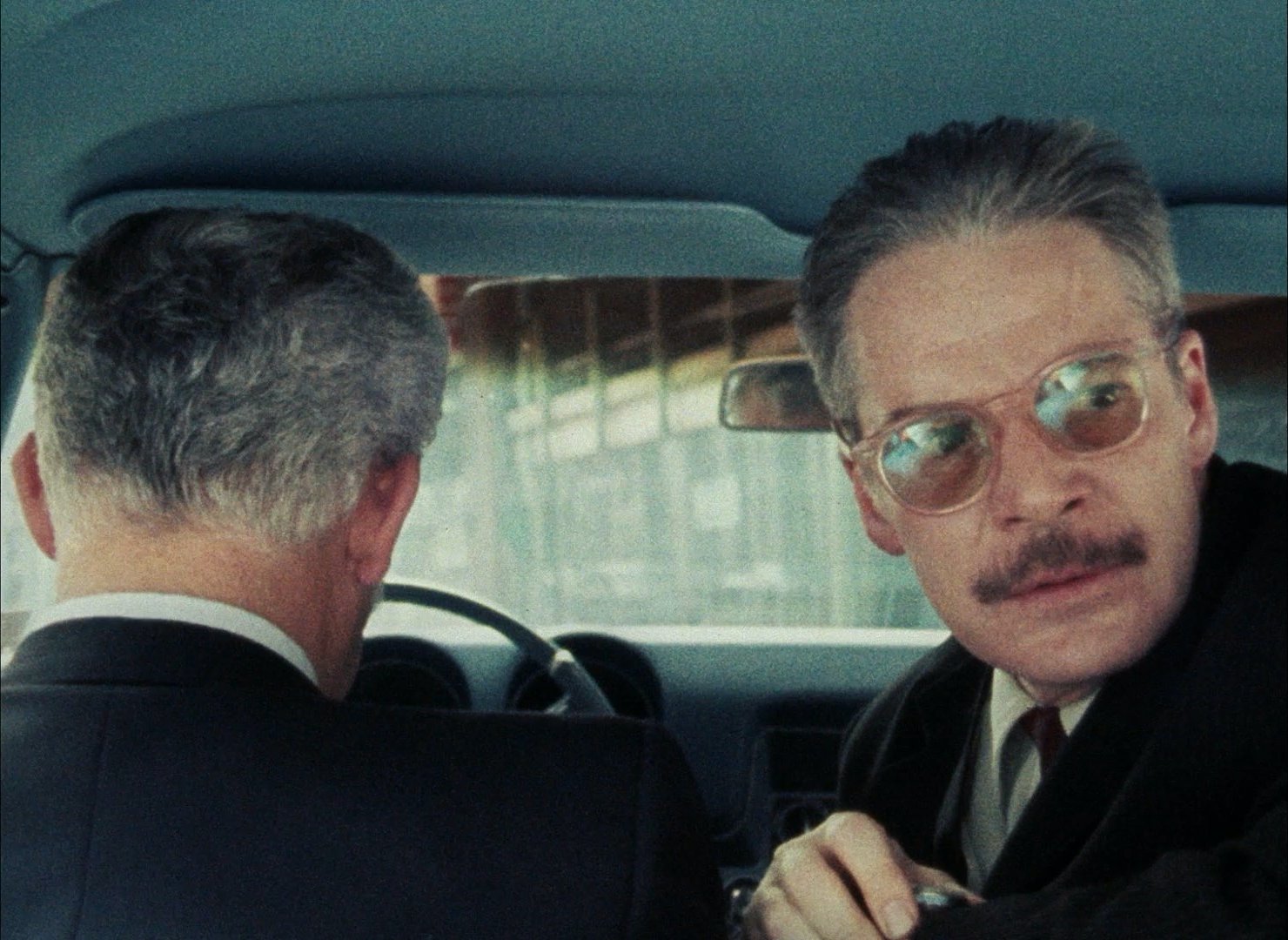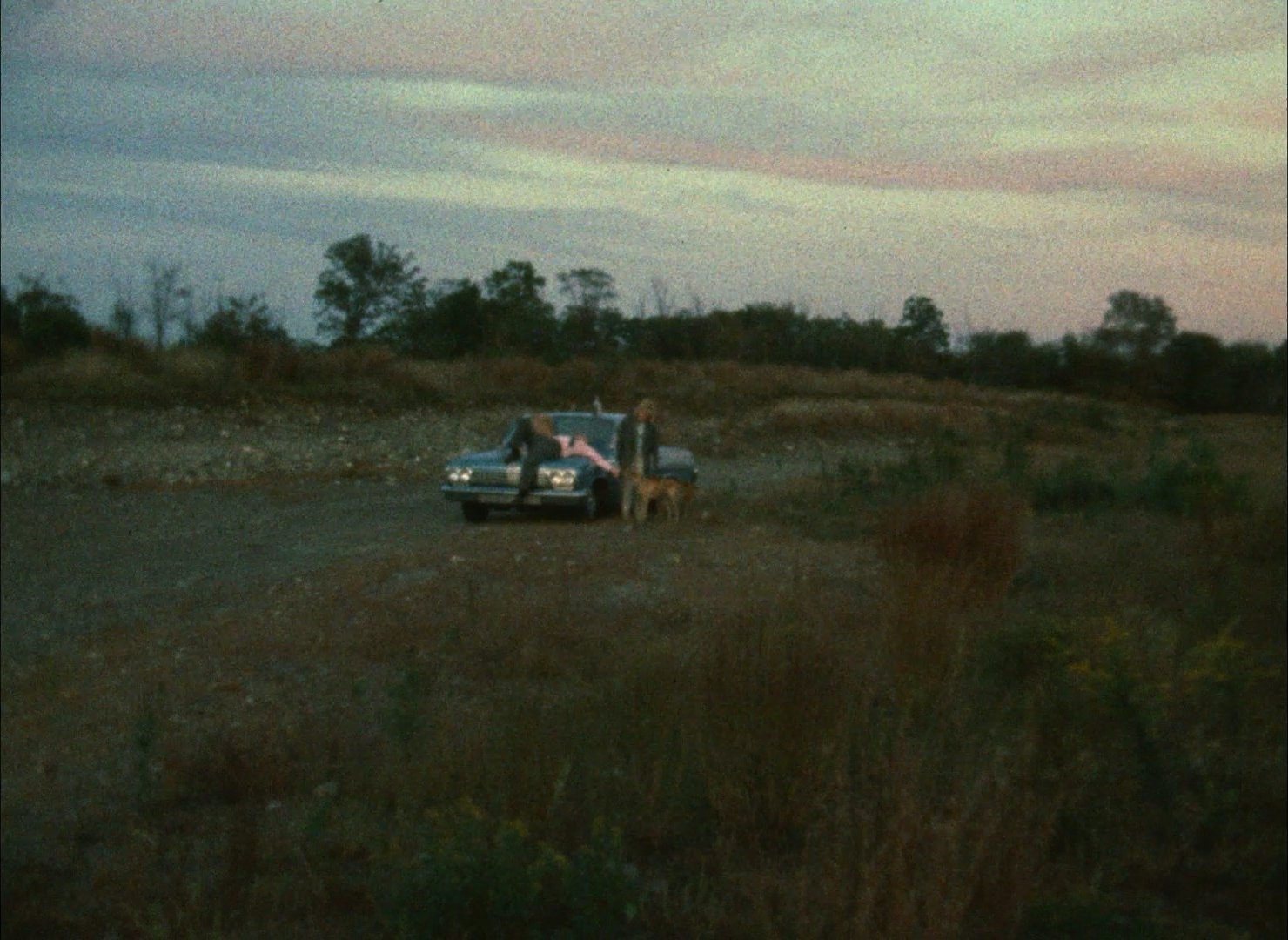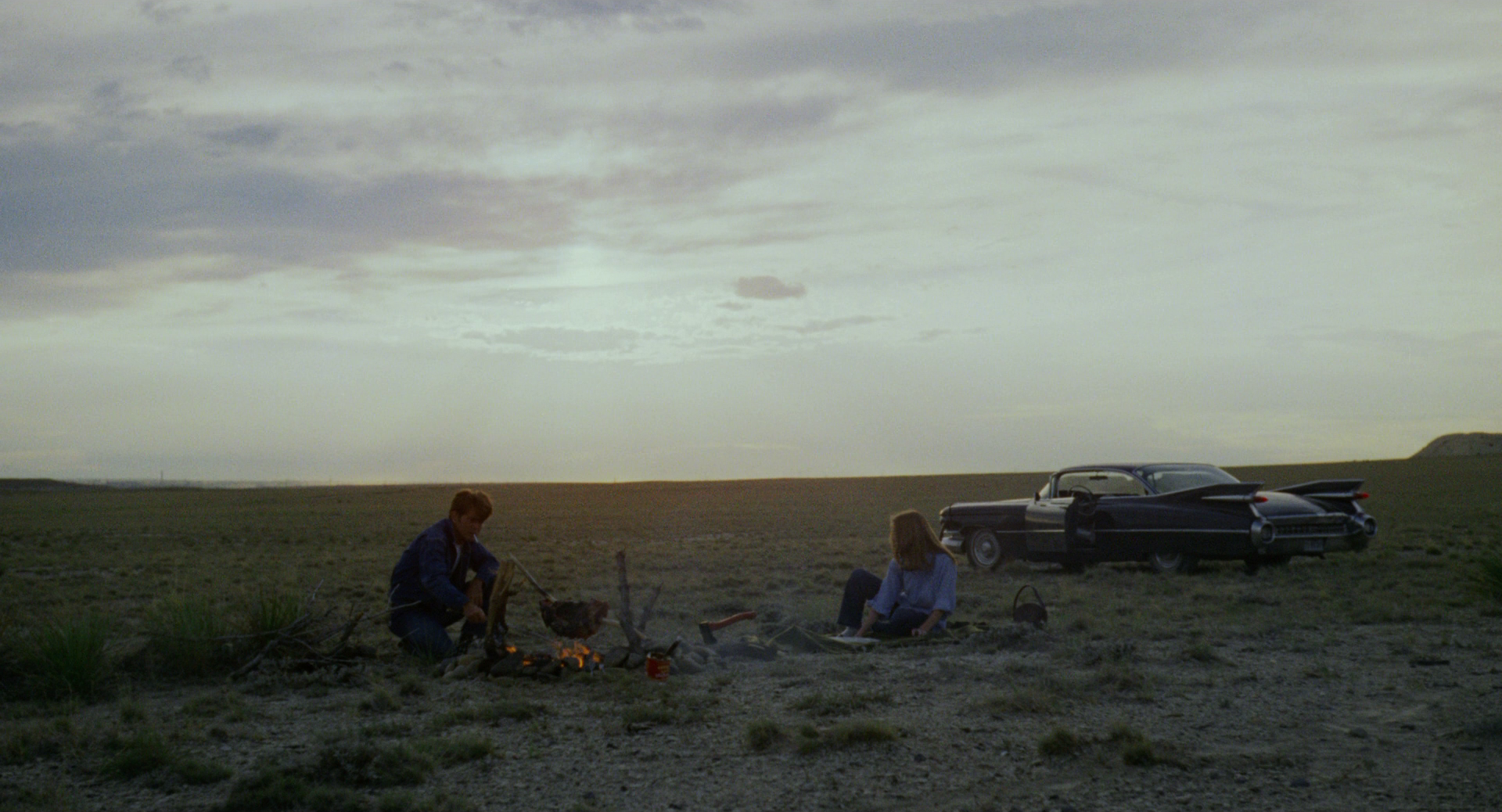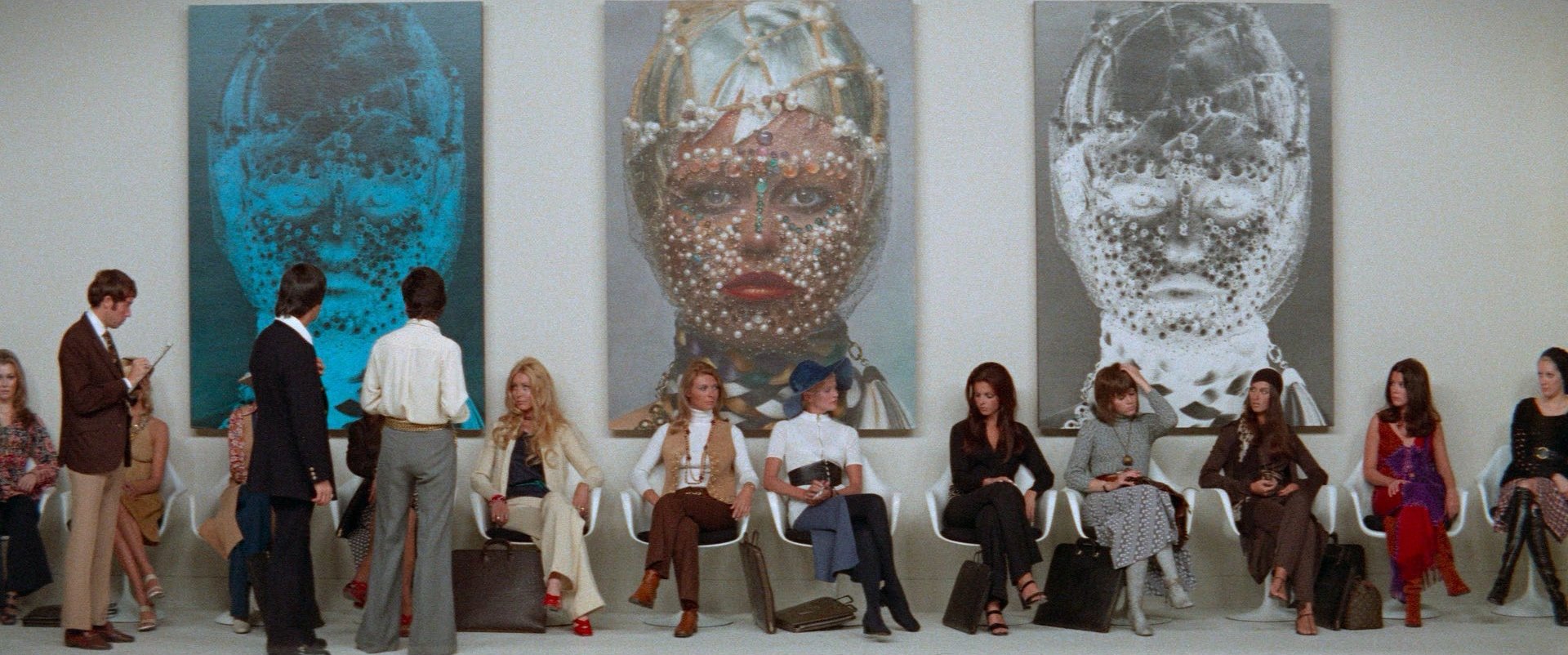Pat Garrett & Billy the Kid (1973)
QFS No. 170 - Sam Peckinpah is one of those filmmakers who’s beloved by a lot of people – especially filmmakers – and was known primarily for the Western genre, first as a writer then director. The Wild Bunch (1969) remains a classic (and violent) reinvention of the Western and a favorite of many. Straw Dogs (1971), The Getaway (1972), Convoy (1978), Cross of Iron (1977) are all revered in their own ways and I challenge you to find a better title than Bring Me the Head of Alfredo Garcia (1974).
QFS No. 170 - The invitation for March 19, 2025
Personally, I love Westerns and could’ve picked any number of them this week for our 170th (!) film. But I was recently given a Criterion Blu-Ray of Pat Garret and Billy the Kid as a gift and, consarnit, I’m going to watch it.
Sam Peckinpah is one of those filmmakers who’s beloved by a lot of people – especially filmmakers – and was known primarily for the Western genre, first as a writer then director. The Wild Bunch (1969) remains a classic (and violent) reinvention of the Western and a favorite of many. Straw Dogs (1971), The Getaway (1972), Convoy (1978), Cross of Iron (1977) are all revered in their own ways and I challenge you to find a better title than Bring Me the Head of Alfredo Garcia (1974).
This is our first Peckinpah selection and I’m excited to watch our first Western in three years (!) since The Power of the Dog (2021, QFS No. 68), and that might not be even considered a Western. We might have a few more in 2025 to balance out the scales.
Reactions and Analyses:
Pat Garrett & Billy the Kid (1973) feels oddly recognizable, familiar. The criminals are now the authority, running the government and enforcing the laws. Not too long ago, they were outlaws, pariahs, deemed a menace to society. And the lawman now enlisted to bring down the most notorious lawbreaker was once his friend and partner-in-crime.
This blurring of the line between who is good, who is the one we trust and who is evil and how close they are together lie at the heart of Pat Garrett & Billy the Kid. Sam Peckinpah, often concerned with nihilistic violence, explores something even deeper here, something about the nature of friendship, regret, and poking in holes in the traditional good-versus-evil dynamic in the Westerns of old.
The use of “something” here is deliberate, because it feels as if Peckinpah is circling a thesis but never quite lands on it. Pat Garrett (James Coburn) as the lawman, is nominally the protagonist. But his actions are not at all laudable for much of the film. He shoots first then ask questions later, gunning down Bowdre (Charlie Martin Smith) in cold blood at a distance as they ambush Billy the Kid (Kris Kristofferson) and ultimately capture him for hanging. Later, Garrett physically abuses women, sleeping with several prostitutes at once while he’s supposedly diligently attempting to find Billy. And he’s the “good guy” in this Western.
Billy, on the other hand is affable and clearly beloved by his crew. Though he’s not all that noble himself – he shot people in the back throughout his notorious career and also in this film – he has a more devil-may-care code of ethics. If there was a party, you’d much rather invite Billy than Pat.
One of the members of our QFS discussion group suggested the dynamic between Billy and Pat represents something of the early 1970s and the Baby Boomer generation. By the 1970s, the decade of free love, free spirited hippiedom was in decline and it was time for those kids to “grow up” and become part of the establishment.
Pat Garrett here has done that. His days as a criminal are over and he even says, “It's a job. Comes an age in a man's life when he don't wanna spend time figuring what comes next.” It’s time to become an adult – but even adults can retain the unsavory elements of the past.
And while this is the backdrop, Peckinpah also explores celebrity and notoriety. After Garrett has finally tracked down Billy to Fort Sumner and plans to shoot him at night, Garrett finds Billy in bed with his lady friend and simply waits in the night air. Garrett appears to be allowing Billy one final night of joy before he ends his life. Or perhaps Garrett feels guilt for killing someone who he once treated like a son. Billy steps out of his bungalow into the night air for a moment on the other side from where Garrett awaits, and it’s Deputy John Poe (John Beck) who suddenly has a chance to shoot him. But upon seeing the legendary Billy the Kid before him, the deputy cannot pull the trigger. He is in too much awe, blinded by Billy’s fame to pull the trigger.
It’s no surprise that Terrence Malick’s Badlands (1973) comes out at this same time. In it, Kit (Martin Sheen) becomes a celebrity outlaw after going on a shooting rampage with Holly (Sissy Spacek) in tow. When the state police finally catch him, they show more admiration of him than fear, impressed with a man romanticized in the newspapers. Bonnie and Clyde (1967), a few years earlier, famously explores this dynamic and became the blueprint that filmmakers continue to follow even now.
Celebrity outlaws are not uniquely American, but they are very much a part of the Old West and the portrayal of that time through the Western genre. Though not a Western technically, Badlands showcases much of the traits and features of the classic American genre. Both Malick and Peckinpah don’t say on the screen that criminal celebrity worship is a good thing. If anything, both are criticizing how much we laud the criminal, value fame above morality. And that nothing is as clear cut as good from evil.
Pat Garrett & Billy the Kid is an imperfect film, circling ideas but not exactly landing on them. Just look at the editorial and release history of the movie and you can see why. The fabled drunken master Peckinpah battling with the studio over the cut, only years later to reclaim the cut, and only years after his death to have missing scenes – including the scene with Bob Dylan’s “Knocking on Heaven’s Door” – restored at the insistence of Kristofferson, to yield the version we see now, more than 50 years later.
Speaking of Dylan, his soundtrack is perhaps what sets this film apart and makes it required viewing despite its imperfections. Dylan’s classic folk music lends itself perfectly for the film – a somber, reflective undertone for a movie that’s more meditative than action. The above- mentioned scene with “Knocking on Heaven’s Door” is the most effective moment in the film. Sheriff Cullen Baker (Slim Pickens) and Mrs. Baker (Katy Jurado) join Garrett in trying to question Billy the Kid’s old partner Black Harris (L.Q. Jones), before Baker is shot in the stomach. He slowly dies and his wife sits with him, tear-streaked, as they watch the sunset and the painted sky, Dylan’s music playing us to the end of the old cowboy’s life. The scene strikes at the heart perfectly, an unexpected mature death scene for a Peckinpah film.
How does it feel, Billy asks Garrett in one of the first scenes of the film – right after Billy’s been obliterating chickens for fun near the opening of the film.
Garrett’s answer, It feels like … times have changed.
Times maybe, but not me, Billy says.
This, perhaps, is as close as Peckinpah gets to a thesis, a central idea. What’s like to sell out, to betray yourself and those around you? Well it’s not that simple – things change and you have to change with it. But that growth can come at a cost. It’s no mistake that the mirror shatters when Garrett finally shoots and kills Billy, his own image of himself destroyed and fractured. The price of selling out is your own soul.
Death Race 2000 (1975)
QFS No. 146 - The late great Roger Corman produced this film about a dystopic, mayhem-ridden future. And I, for one, have been keen on seeing it. It takes place in the distant future, the year 2000! What will life be like then? Who knows! Well, the late great Roger Corman will tell you!
QFS No. 146 - The invitation for June 26, 2024
The late great Roger Corman produced Death Race 2000 set in a dystopic, mayhem-ridden future. And I, for one, have been keen on seeing it for some time. It takes place in the distant future, the year 2000! What will life be like then? Who knows! Well, the late great Roger Corman will tell you!
In Death Race 2000 you’ve got the red-hot stardom of David Carradine to contend with alongside upstart nobody Sylvester Stallone. Made on a Corman-style budget, this feels like an even more appropriate Corman selection than our previous one, X: The Man with the X-Ray Eyes (1963, QFS No. 89). Corman directed that masterpiece himself. This one, he produced it on his B-movie assembly line and is one of the films that actually (sorta?) penetrated into the broader mainstream.
And this is our first return to a Corman film since the legend passed away last month. Let’s honor him by easing back on our critical thinking skills a touch and watch one of his classics. Kick back, relax, and watch the soothing tale that I’m sure is at the heart of Death Race 2000.
Reactions and Analyses:
There was something in the air in the mid-1970s. Part of our QFS discussion about Death Race 2000 (1975) debated what could be the reason for the glut of post-apocalyptic films in the 1970s and into the early 1980s.
The filmmakers of this era grew up as children with memories of the horrors and heroism of World War II and came of age in the Cold War, a time fraught with the very real possibility of global extinction from nuclear weapons. In the 1970s, The studio system no longer had a stranglehold on filmmakers and a parallel film track from auteurs was starting to penetrate the mainstream.
So given some of these conditions, we see films like A Clockwork Orange (1970), Logan’s Run (1976), Soylent Green (1973), Mad Max (1979) and its sequels, Omega Man (1971), Rollerball (1975), Planet of the Apes (though from 1968, the film franchise continues in the ’70s), and perhaps you could argue THX 1138 (1971) and Stalker (1979, QFS No. 25) as well. And of course, Death Race 2000.
Many of those films are attempting to make a commentary about something – overpopulation (Soylent Green), reliance on fossil fuels (Mad Max), nuclear war (Planet of the Apes, presumably and maybe Stalker), totalitarianism (THX 1138).
And then you have commentary on violence in society and our fascination with it (A Clockwork Orange), how we’re inured to it and, in the case of Rollerball and Death Race 2000, how that fascination is literally turned to sport.
How much social commentary Roger Corman and director Paul Bartel are actually interested in is probably very little. The film is perhaps best summarized as one QFS called: the perfect hangover movie to watch after waking up at noon after a night of drinking. This is, of course, high praise.
The premise of the eponymous “death race” is … simple? Simple, but convoluted. Annually, as a way to appease the masses, racers speed across the continent racing from New York to Los Angeles while trying to kill as many people as possible with their vehicles. Killing the elderly or children will give racers the highest number of points. But also – whoever finishes first wins? It’s not entirely clear.
But it really doesn’t have to be. Just take one segment in particular and you can see exactly who this film is intended to reach. After the first day of racing early on in the film, all of the drivers and their navigators (who, we all agreed, are just there to “service” the drivers in all ways practical, emotional, and physical) are naked lying down getting massages. It’s so amazingly gratuitous without really any reason for its inclusion other than attracting the target audience – adolescent males. And given some of the laughable B-movie blood-splattered scenes from the race, it’s almost impossible to refute that the American male ages 16-30 are the ones Corman was after.
Still, the film is engaging even beyond that demographic. The racing sequences, sped up to amply the scenes, are propulsive. Much of the action follows people in motion, the world whipping behind them. The film introduces the drivers in the most efficient manner, almost akin to a video game with each car and its unique killing apparatuses detailed for the viewer. Add to the fact that this was made on a shoestring budget, and it’s quite an achievement in filmmaking.
But with that shoestring budget comes risks. Namely in performances that lack any sort of attachment to reality - what is more simply can be described as “bad acting” – in particular from the supporting cast. But it’s not like David Carradine (as Frankenstein) or Sylvester Stallone (as Machine Gun Joe Viterbo) are lighting up the place with their performances. They don’t have to, of course, but it all contributes to Death Race 2000 feeling more like a product of its time than a trenchant analysis of American society.
Watching Death Race 2000, I was reminded of two movies that are seemingly vastly different from each other. First, The Hunger Games (2012) and its sequels and also Network (1976). The Hunger Games books and film franchise take place in a world in which a deadly game is watched by all in a post-apocalyptic agreement between nations to quell civil war, where teens are sacrificed for the sake of peace and stability. The idea of a violent sport as a way of a nation together after some cataclysm felt very similar to Death Race 2000.
Network explores the line between news and entertainment. There’s an element of watching something horrible on screen – in this case Howard Beale (Peter Finch) having a breakdown on television – and going through with it because the ratings are high and that’s all that matters. There’s something similar in Death Race 2000. Everyone is watching this national event with glee, even actual Nazis cheering an actual Nazi car in front of people in the stands with swastikas on their sleeves.
Going back to – what are the filmmakers trying to say? At first the film seemed to be a critique against the glorification of violence. Frankenstein wants to abolish the race and return to the rule of law in the country. When he has an opportunity to kill dozens of elderly patients who were about to be euthanized – and thus getting more points – he does not. So this appears to be a point for the idea that violence is not the way or something to that effect.
But what does Frankenstein do instead? Runs over dozens of doctors and nurses! He gets fewer points but he still goes through with killing for the sake of the race. The commentator Grace (Joyce Jameson) defends the action, saying those doctors were smug and they deserved it but the low point total might cost Frankenstein in the long run. Quite the sacrifice!
Okay, but then Frankenstein still does intend to change things. How? By using his prosthetic hand grenade (built into his hand!) to kill the president. He ultimately kills him, with the help of Annie (Simone Griffeth). And then, in the coda to the movie, he’s now president (how?) and is about to leave on his honeymoon with Annie. But that annoying announcer Junior (Don Steele) is in the way, so he just runs him over. Presumably, old habits die hard.
So there are logical issues with the underlying desire of the main character. But there are logical issues throughout so this is par for the film. How are they watching all of the races? Why are people taking different routes when they all should take the most direct routes? Why would anyone be out at all on this day knowing they can be killed? Why again do we hate the French? How is Frankenstein president, what kind of succession plan is in the United States of the future?
The answer to all of these questions is – it doesn’t matter. Of course it doesn’t. Or Corman knows that you don’t have to answer every single logic question a movie raises, just as long as you have all the right elements for film. A premise, a world created, and speed to plow through all logic. And, of course, gratuitous nudity and violence. Is Corman criticizing sensationalism by clever use of sensationalism? It’s hard to say and perhaps that’s the lasting genius of Corman’s work in Death Race 2000 and beyond – the ambiguous nature of the theme, but the unambiguous enjoyment of fast cars hurtling across a post-apocalyptic landscape.
A Woman Under the Influence (1974)
QFS No. 145 - We haven’t yet selected a John Cassavetes film here at Quarantine Film Society and this shortcoming has sent shockwaves throughout the organization.* What’s just as shocking is that I, your humble narrator, have never seen a Cassavetes film. In 2013, The New Yorker, wrote that Cassavetes “may be the most influential American director of the last half century” and A Woman Under the Influence (1974) Cassavetes’ most beloved work.
QFS No. 145 - The invitation for June 19, 2024
We haven’t yet selected a John Cassavetes film here at Quarantine Film Society and this shortcoming has sent shockwaves throughout the organization.* What’s just as shocking is that I, your humble narrator, have never seen a Cassavetes film. In 2013, The New Yorker, wrote that Cassavetes “may be the most influential American director of the last half century.” The last half century, mind you, included the likes of Steven Spielberg, Stanley Kubrick, Francis Ford Coppola, Martin Scorsese and a lot more! So this is a pretty bold claim. And even more shameful I haven’t seen a Cassavetes film yet.
Oh sure, I’ve seen Mr. Cassavetes as an actor in such films as Rosemary’s Baby (1968). And his auteurist spirit lives on in John Sayles, Jim Jarmusch and especially Scorsese. So I feel as if I have witnessed his influence, if not having seen any of his actual work as a director itself.
I write all this just to make myself feel better because I know, I know, I should’ve been familiar with Cassavetes’ work from the second I stepped foot onto the American Film Institute campus lo those many years ago. His Faces (1968) and The Killing of a Chinese Bookie (1976) have been on my list for a while, just as this week’s selection has.
A Woman Under the Influence is considered Cassavetes’ most beloved work and stars his wife Gena Rowlands and Peter Falk (as not Columbo). I’m eager to finally watch one of the true fathers of modern cinema, especially modern cinematic performance and independent filmmaking, to fill in a gaping hole in my film knowledge.
Join us to discuss A Woman Under the Influence! Feel free to be under the influence of something as well – it’s summer, after all!
* The QFS staffer responsible for this oversight has relinquished their proper name and has been remanded to a farm upstate.
Reactions and Analyses:
A Woman Under the Influence (1974) offers no answers. Is it about addition? Is it about toxic relationships? Is it about mental illness? Is it about double standards between how men are treated versus how women are treated? Is it none of these or all of these?
Director John Cassavetes does not seem to be raising awareness about addiction or mental illness or any of the other aspects listed above. If anything, A Woman Under the Influence is a portrait of a relationship between two dysfunctional people. Neither change, neither seem to learn or grow. One doesn’t know how to communicate with the other and one may not be capable of behaving in the world as a functional adult. From a storytelling perspective, the movie fights against all filmmaking convention, where scenes seem to continue on past their natural end, creating a feeling of uneasiness, that we’re watching something we shouldn’t watch but we are not released from having to watch.
In a word, the film is relentless. There’s no escape from these two and their manias. Everyone in the QFS group felt that way – the exhaustion, the cringe-inducing awkwardness, the uneasy witnessing of a dysfunctional marriage. Cassavetes traps you in this film in the way that the characters are trapped. In that way, it’s truly a remarkable achievement of filmmaking.
One of the members of the group brought up the ending, which I agree is pretty perfect and apt for the story. In fact, the entire final sequence contains the rest of the film in a nutshell. Nick (Peter Falk) has slapped Mabel (Gena Rowlands) for standing and singing on the couch, and the children are trying to protect her and refuse to stay in their rooms after he physically carries them upstairs (twice!). He has just shouted at them all, saying he’s going to murder her and their kids. It’s terribly upsetting and wrenching, especially since Mabel may just attempted suicide but instead cut her hand and now lies there bleeding slowly from the wound. Everyone, then, calms and Mabel gathers herself and tenderly puts the kids to bed.
Nick washes Mabel’s hand with equal tenderness – a man who had just hit her moments earlier and threatened mass homicide – and they’re both silent as the water cleans her hand. The Mabel talks in low tones and asks if he loves her. Nick can’t answer. He looks up at her a couple of times and back down at the bandage and the wound. And he seems like he wants to say something, but he can’t - or won’t. This is someone who has professed or at least demonstrated that he does care for her deeply. But he’s also someone who has hit her several times in the film. This moment contains so much without saying anything – which is what he does. He says nothing. It offers no answers.
But perhaps the most brilliant part of this sequence is the next and final one of A Woman Under the Influence. As the music plays, both clean up the living room and put everything back the way it was. Not fixing anything, just rearranging as if it’s all back to normal. This also speaks volumes – nothing has changed. They’re going to continue on in the same manner as when they began the film and presumably the cycle will continue.
The story unspools. We’re dropped into this family and watch what they’re experiencing as if we’re a part of it but we gather information as it goes along that changes our perspective. At first, Nick seems to tell co-workers that his wife is loving and takes care of all the household needs. He tries to get his fellow workers the night off but instead they end up having to fix a water main and he can’t spend the night with Mabel. She, for her part, has given the kids to her mother so Mabel and Nick can have a night together.
So for the first 10 minutes or so of the film, it feels like a happy, healthy family with support and a couple who are hoping to spend more time together. But then Mabel drinks heavily, goes to the bar on her own, picks up a man, brings him home, and (we think) they sleep together. So at first it appears that Mabel has a drinking problem brought on by loneliness because her husband works so much.
A typical setup and familiar story. But then, when Mabel wakes up and the man (Garson Cross played by George Dunn) tries to slink away in the early morning, Mabel calls him by her husband’s name and is confused where the children are. We had seen her just the afternoon before as she put the kids in her mother’s car. Her behavior is jarring, and we start to realize that Mabel’s problems aren’t only substance-related – she has some form of mental illness.
For Nick’s part, at first he seems like a garrulous but likeable middle-class working man, doing his best to live with a woman who suffers from mental illness and doesn’t know what to do. He expresses regret on the phone that he has to stay out late working, and we’re led to believe this is a reasonable caring man – until we seem him shouting at Mabel in front of his co-workers at dinner the next day. (Setting aside for a moment how unusual it is for Nick to have invited a dozen guys from work over to dinner after being gone for probably 40 hours straight and missing a night with his wife...) Throughout that dinner scene, Mabel is so hard to watch – smiling and enjoying, but clearly not all there. So then when she insists on someone dancing with her and Nick shouts in front of everyone, we feel as if we’re in that dinner and can feel that awkwardness the others feel.
At this point, it seems as though Mabel has a clear mental problem. But with Nick, we start to get close. Is he abusing her and that’s what’s driven her to this point? Or is it Nick driven to this rage because he’s lived with a person with mental illness and has no tools to address it in a time where these conditions were even more stigmatized than they are now 50 years later? Soon, we do see Nick strike Mabel so we know he’s capable violence as well. This unspooling continues as we learn more and more – the introduction of the doctor who knows her condition, Nick’s mother, Mabel’s mother and later her father. It’s clear this has been going on for some time and we’re just catching up.
One question that came up in the discussion is – does Nick have a mental illness as well? He seems prone to outbursts and violence, mood swings of his own. He wants to control everything, show everyone that everything is normal. Take the scene at the beach with the kids. He insists they go to the beach but then Nick chases down his daughter even though all she was trying to do was going to work on the sand castle. He preferred her be over by him on a beach towel, I guess?
Nick is also prone to extreme overreacting. He comes home when Mabel has been “babysitting” her three kids and two friends. Nick arrives and the kids are all trying on clothes in a costume party and their daughter is running around naked, as kids sometimes do. He flies off the handle, threatens to kill the other kids and their father, Harold (Mario Gallo) in what can only be described as an unnecessary escalation.
To me, it seems clear that Nick also has a mental condition of some kind. Others weren’t so sure, they felt he was perhaps behaving in a way that someone might behave living with a loved one who has manic mood swings the way Mabel does (not that they condoned the violence of course). Whatever it is – perhaps some combination of both mental illness and driven to the edge (again, Cassavetes provides no answers) – it’s clear that the combination of Mabel and Nick is combustible. They go up in flames.
It says volumes that Nick can get off by behaving the way he does without so much as a mention of him having a problem that needs to be addressed, but it’s Mabel who gets carted off to an institution for six months. She’s subjected to shock therapy and separation from her children, but no one tells Nick that he’s got to seek counseling for rage or domestic abuse as well. He definitely definitely needs it. But it’s 1974, he’s a working class male in America, there is likely no way it’s even on his radar – or on anyone else’s in the family – that he has problems that need to be addressed.
Instead, he’s free to take his young kids out of school, ride in the back of a pickup truck with them, give them Hamm’s beer until they’re drunk enough to sleep as soon as they get home. It’s both a product of the 1970s and also the double standard of how the “hysterical” woman is treated versus how a man is, as reckless as his behavior may be.
Nick tries to get convince everyone, and maybe himself, that you can just force yourself to act normal and things will be normal. He plans a large, ill-conceived party for Mabel’s return from the institution. He invites all of the guys over for dinner after the work shift. He shouts at Mabel to just flip the switch and act normal. But that’s not how it works, and nobody in the film knows how to deal with Mabel’s problems – least of all the family doctor (Eddie Shaw). Dr Zepp communicates with Mabel in a way that we would, in 2024, recognize as profoundly unhelpful. Telling a manic mental health patient to simply “calm down” or the like is definitely not at all useful in any way.
A Woman Under the Influence is not easy – not to watch and also not easy to discern what meaning to derive from it, if any. And yet, it does feel like essential viewing. There are scenes where the filmmaking is top tier. When Nick’s drinking with the children (that’s so strange to write…), it’s a very tight closeup on Nick as the frame bounces violently, but solidly holding the closeup on Nick. The world speeds past him, out of focus and in a blur behind his head and the red railing of the truck. And he speaks very earnestly with the kids, apologizing for having to send their mother into the institution. The contrast between the dynamic background and what he’s saying is incredibly effective and affecting, giving the feel of that’s what his life feels like.
Also, when Mabel comes back home, she finally gets to see the children. She steps into the adjacent room and it cuts to a close up on her face. All of the shots are tight – there is no wide shot that holds the room and the family. It’s tight on her, then tight on the kids, it’s a little disorienting and you can’t quite get your bearings. This is how Mabel feels, and it’s done with the camera, without any gimmicks or special effects. Just simple shot selection, cinematography, choice of camera, and performance. Basically – directing. Cassavetes pushed his performers to the brink to expose their raw insides, photographed that rawness, and made a wrenching, relentless film.
In A Woman Under the Influence, he pushes his audience the same way, giving them no way out. Just as the characters in the film are trapped by their circumstances and each other. Is the moving saying anything about that? Is it saying nothing about that? I still don’t know for sure. So if if for nothing else, the movie is worth enduring exactly because it offers no easy answers in the way that life often does not.
Wanda (1971)
QFS No. 138 - Woah, what’s that you say? You’ve never heard of Wanda? You uncivilized movie ignoramus. That’s outrageous, well I oughta…
Okay fine. Neither had I.
QFS No. 138 - The invitation for May 1, 2024
I’m sure you all have seen this movie because it’s the 48th Greatest Film of All Time™.
Wanda – according to the oft derided/lauded* British Film Institute Sight and Sound Greatest Movies of All Time List released every ten years – is the 48th Greatest Film of All Time. Forty-eighth! Following a two-way tie between North by Northwest (1959) and Barry Lyndon (1975) at No. 45 and tied at 48 with Carl Theodor Dreyer’s Ordet (1955).
Woah, what’s that you say? You’ve never heard of Wanda? That’s outrageous, well I oughta…
Okay fine. Neither had I.
Wanda falls firmly into the Jeanne Dielman, 23, quai du Commerce, 1080 Bruxelles (1975, QFS No. 98) territory here – a film from the 1970s that’s highly acclaimed by critics and filmmakers and one I have never heard of. (Not stylistically, just in terms of obscurity… for me at least.) I do feel some measure of shame for not knowing about both Wanda and of course Jeanne Dielman from before. So here we go again, firming up our film nerd cred by watching and discussing Wanda as a film and of course whether there are only 47 greater films ever made than it. I know very little about this movie but what I do know is that it is significantly shorter than Jeanne Dielman.
For those of you keeping score at home, this happens to be our tenth selection from the BFI top 100 list. We’ve previously selected No. 1 Jeanne Dielman, No. 5 In the Mood for Love (2000, QFS No. 105), No. 11 Sunrise: A Song of Two Humans (1927, QFS No. 104), No. 30 Portrait of a Lady on Fire (2019, QFS No. 114), No. 43 Stalker (1979, QFS No. 25), No. 60 Daughters of the Dust (1991, QFS No. 18), No. 67 The Red Shoes (1948, QFS No. 52), No. 72 L’Avventura (1960, QFS No. 116), and No. 95 A Man Escaped (1956, QFS No. 9).
I have seen 60 films in the Top 100 and yes, I just them up counted now. Am I proud of this or a little concerned? I’d say both. Looking forward to knocking No. 48 off the list! Watch Wanda and return here to discuss!
*I both laud and deride the list routinely.
Reactions and Analyses:
It’s hard to watch Wanda and separate the narrative from the craft. The story, though thin on a driving narrative, is still compelling. And the reason to keep watching is Wanda (Barbara Loden), seeing what happens to her as she drifts through her life. The movie is also about how Loden made it and what that evokes in us as a viewer. This is true for many films to some extent – the how did they do that idea – but there’s something different about the “how” with Wanda and it in some ways fleshes out the “why.”
Shot mostly on 16mm reversal stock – which is cheaper but less forgiving than negative film and more in line with budget-strapped documentarians of the day – Wanda, though restored, retains the grainy immediacy of the shooting format. Which makes it feel like a time piece. Stores that no longer exist populate the world (Woolworths and Korvette), the clothes, the rampant smoking, the cars that are easy to break into and hotwire. Although it’s not a documentary and it’s not New Wave, it has a feeling of being a loose and free portrait of a time, place and character where we’re experiencing the world with Wanda because we experience almost the entire film through her perspective.
Our group had a very mixed set of reactions to the film. Wanda gives so little information that the viewer pieces backstory and character motivation together with the clues that are in there throughout. Motivation is a tricky word because … is there motivation? Is Wanda motivated at all? She’s the biggest enigma of the film. Her expression and her emotions are minimal. She’s in court and does the opposite what we’d expect – she doesn’t fight for custody of her children at all. She can’t care for them but also doesn’t seem to even acknowledge them. The children, shockingly, don’t acknowledge her at all.
This speaks volumes and breaks with audience expectations of how a woman, a mother, would behave when around her children. The children perhaps no longer know Wanda as their mother at all.
When I saw this scene, I felt I knew Wanda or at least understood her backstory. She felt like people I know who I grew up with in the Midwest and so I extrapolated what I felt I knew about her. She is from a place and time where women aren’t getting a great education and are likely expected to marry at a young age. She’s attractive, so I imagined she got by on her looks, married young, had children young, and suffers from depression – or at least this sense that she never had direction in her life.
And true enough, the film starts to bear this out. Wanda does in fact get by on her looks – she’s robbed, has no money, but sleeps with a man who’s paid for her drink and then abandons her at an ice cream stand (who also takes pity on her and gives her an ice cream cone, unbidden). She’s directionless and just pulled along by whatever happens to her, getting swept up with a two-bit crook Mr. Dennis (Michael Higgins) and ends up being his accomplice (but it’s not clear she really wants to?). No one shows her any kindness without it being transactional - for sex, usually - except the guy with the ice cream cone and a brief moment when Mr. Higgins tells her she did good in their taking of hostages. The smallest of smiles crosses Wanda’s face and you get the sense that nobody has given her an earnest compliment in a long time, or maybe ever.
Wanda does push back at one point, vomiting from nerves before the ill-conceived heist and saying she doesn’t want to go through with it. It’s one of two times she takes real action and shows agency. (Of course, she gives in and goes through with the bank robbery anyway.) The second time is near the end of the film when the airborne officer attempts to rape her in his car and she actually fights back and escapes.
The passivity and the narrative ambiguity proved to be too much for several of the QFS members. For me, I was taken along with the filmmaking and the storytelling but I definitely can understand how frustrating Wanda could be as a character. What is motivating her? What is she living for or striving for? Nothing? It must be nothing.
The filmmaking, however, is pretty remarkable. As mentioned earlier, this is one of the cases where I find it’s hard to separate the film from the filmmaking, or the feat of how they made the film. It has that lean, free-camera feeling of an expert filmmaker, not a first-timer with a crew of … four!
For example – the early shot in the film, when Wanda leaves what has to be one of the bleakest houses ever portrayed in cinema as it’s immediately adjacent to a coal strip mine. Wearing light colors, she walks through a black landscape, coal all around, the camera feels like it’s a mile away and she’s very tiny in the frame. The shot continues for a long time. Too long, contemporary audiences complained. To which she explained in an interview (as retold in Current), “I wanted to show that it took a long time to get from there to there.”
That’s very telling, and also illustrative of Loden as an artist. She made choices in a film that seems “real” and that we’re watching a real person drift through life. It’s a real tragedy that Loden never made a movie and died a decade later. Her follow up to Wanda would’ve been something very special. The filmmaking of Wanda should be taught to directors just starting out who use their own moxie to pull off something meaningful.
The driving sequences should be necessary film references for any filmmakers shooting from or with a car. Loden has shots looking through the front windshield onto the drivers – which means, given her limited budget, that they had the camera operator strapped to the hood of a moving car. The shots are so lovely for what is probably one of the most awkward road trips ever filmed. During that trip, the camera is in the passenger seat (sometimes the driver’s seat!) looking right at Mr. Higgins or Wanda, and it feels like we’re on the trip with them. But the driving sequence that’s most riveting is the attempted hostage taking and bank heist. The interplay between the two cars, the movement, the camera moves inside the car from Mr. Higgins’ watch to his face for example – these are extraordinary. There is so much dynamism in the sequence, so much tension – especially when Wanda is pulled over for making an illegal U-turn – that it suggests a much more experienced director at the helm than someone making their first film.
Variety of shots while driving, expertly done by Loden and her cinematographer/entire camera crew Nicholas T Proferes.
Wanda evokes Terrence Malick’s Badlands (1973) – a film that comes out only three years later. (I made a joke in our discussion that this was a much sadder film given the petty and incompetent thief and should be called Sadlands. It got very few laughs but it’s hard to tell on Zoom sometimes, right? Right?) Similarly in the two films there’s the crime, the listless, emotionally detached lead female protagonists who are carried through the story by awful men, taking place in a part of the country that rarely is portrayed authentically on the screen. I have no way of proving the connection, but I discovered that Loden gave a Harold Lloyd Master Seminar at the American Film Institute in 1971 – a time when Malick would’ve been in the audience. I have a theory that Malick was inspired by Loden and what she was able to accomplish on virtually no money and no crew. (Though Malick had young stars, more money and more crew than Loden - but not a lot more.)
Wanda (1970) on the left and Badlands (1973) on the right. I’m sure Loden’s talk at AFI in 1971 helped inspire Terrence Malick to make his first movie, too. (More like “sadlands,” am I right?) I’m compelled to say that I’m a proud alum of the AFI Conservatory and am trying to will this connection into being if it isn’t totally true.
For a film with an inscrutable lead character – or at least one whose motivation can be debated – the most confounding part is the ending. The film concludes on a grainy freeze frame of Wanda, seeking refuge in a bar after nearly being raped (again). Everyone around her is having a good time and laughing it up while she sits and others buy her drinks and food.
But what will happen to her? Will she continue on as she has been? She’s gone through no personal epiphanies, no great character arc. We have no reason to believe that Wanda is going to change. And perhaps this is the lasting idea that Loden wants to leave us with in this image. The world is all having a good time around her, swirling, living life. But she is stuck – literally, since it’s a still image – in her place, dependent upon the goodwill of others and unable to (incapable of?) change. Perhaps it’s a stretch, but the film does begin the way it started – there is no explanation, there is only interpretation.
Klute (1971)
QFS No. 128 - Alan Pakula is one of the great workman filmmakers who seemingly gets overlooked in conversations about the best directors of an era. His films speak for themselves. All the President’s Men (1976) is just an utterly stellar film that really showcases an incredibly adept filmmaker at the top of his game. Throw in The Parallax View (1974), Sophie’s Choice (1982), Presumed Innocent (1990), The Pelican Brief (1993) along with Klute and that alone would be enough to call it a career.
QFS No. 127 - The invitation for November 15, 2023
Alan Pakula is one of the great workman filmmakers who seemingly gets overlooked in conversations about the best directors of an era. His films speak for themselves. All the President’s Men (1976) is just an utterly stellar film that really showcases an incredibly adept filmmaker at the top of his game. Throw in The Parallax View (1974), Sophie’s Choice (1982), Presumed Innocent (1990), The Pelican Brief (1993) along with Klute and that alone would be enough to call it a career. Add the fact that he produced To Kill a Mockingbird (1962) – really an amazing body of work.
Klute along with The Parallax View and All the President’s Men is considered part of an unofficial “paranoia trilogy” – thrillers with that extra paranoid* edge that came to define a mood of the 1970s. I think it’s an excellent time to dip into this, don’t you? I haven’t yet seen Klute but I have heard good things and excited to watch.
Pakula died in a tragic car accident when he was still a viable director, having directed Harrison Ford in The Devil’s Own (1997) a year earlier. Although he was 70, I’m sure we were robbed of a few more excellent films from a very skilled hand at the helm. Nevertheless, his mark on the American film landscape is indelible.
Klute features a great cast, including Jane Fonda who won an Oscar for this and with Donald Sutherland in the title role, a legendary cinematographer in Gordon Willis, and some probably terrifically outdated 1970s social mores. I’m looking forward to finally seeing this and discussing with you next week!
Reactions and Analyses:
A scene early in Klute (1971) is perhaps its most subersive. A wide shot, flat, with women sitting beneath modern artwork. We soon hear the model talent scout, who is entirely off camera, face never clearly seen, talk about each woman as if they’re commodoties. It’s incredibly dehumanizing and, likely, accurate. This is the improbable introduction into Jane Fonda’s character “Bree” who is one of the women and, it turns out, has bad hands. She, and the other women, are treated in such a callous and disposable fashion we immediately sympathize with her even before we know much about her. She’s soon ushered out and the next group of models are brought in (and clearly the agency asked for “ethnic” choices because the next group are mostly Black - which is a really subtle but fine touch by the filmmaker).
Aside from the character introduction, this is a scene that gives us a glimpse into Alan Pakula’s filmmaking. The dialogue, though only spoken by characters we don’t see or have their backs to us, has the feeling of natural conversation - overlapping, easy flowing, conversational and matter-of-fact. Bree, when revealed, is on the side of the frame, partially blocked by the talent scouts in the frame. The choice of shots are both cinematic and photojournalistic - the feeling we’re spying on something real.
This is Pakula’s particular genius, and one that comes out even more clearly in his masterpiece All the President’s Men (1976) - this style I would characterize as “cinematic realism.” It’s not pure realism or documentary style, though his style does make you feel like you’re witnessing something real, like you’re hiding in the room and watching. This is enhanced by the great Gordon Willis, who makes the lighting feel natural and real but uses shadows for creative and thematic effect. Hence the “cinematic” part of "cinematic realism.” There’s still very much the hand of the filmmakers present, with deliberate feeling choices throughout.
This is a style, for me, that I strive whenever I have a chance to make something original. Or, I should say, this is the style that most naturally comes to me. It is, I’d argue, one of the more difficult styles of filmmaking to pull off - to feel both invisible and visible as a filmmaker. To maniuplate the audience but also make it seem like you are not doing so overtly. Pakula shows his mastery of it throughout his work.
In Klute, most of us in the QFS group felt that the thriller aspects of the film to be vastly inferior to mood and themes of the film. The plot is not terribly straightforward, slightly convoluted, with a handful of gaping holes. But the plot is secondary to what the filmmakers are trying to explore about human relationships, about being a woman in a world where a woman has little to no power, about addiction and the human mind.
Bree can’t stop turning tricks, and in the narrative device of the confessional with the therapist, she shares why. She’s in control, she has power and agency. And we see it in the first scene where she has a john and convinces him to pay more. She treats him like he’s the only thing in the world but we, as the audience spying on this scene, see her check the time on her watch.
Donald Sutherland’s “John Klute” on the other hand is such a thinly constructed character of whom we know so little about. When Bree finally seduces him, several of us in the group felt that this was going to go in a familiar way - oh, he’s going to be obsessed about Bree and driven to madness. But the script does something unexpected - she actually falls in love with him. You see it in the fruit buying scene. It’s so subtle, but she wants to reach out and feel for him and it’s clear that she’s found stability or something like love and is unprepared for it. So much so she tries to go back to her old pimp (Roy Scheider’s “Frank”) and … gets high? Or just drunk? Something that requires Klute to help her recover.
Fonda won the Oscar for her role but said afterwards, “I'm not very happy about what the picture is saying to women, which is, if you get a good shrink and a good guy, everything will turn out all right, and I don't think that's true." And that is definitely a problematic takeaway from the film.
But the film’s lasting value is in its style. One OFSer pointed out that when Bree gets a call for a job, she steps into a shadow, literally stepping into the dark and away from the light. There are other really memorable uses of light and dar - when Klute watches Bree undress for the older fabric salesman he’s in the shadow; the silhouettes in the very first wide shot at dinner where the foreground diners are in shadow but the background ones against the window are lit; when Bree is talking to Peter Cable (played by Charles Cioffi), her face is lit but everything behind her is in shadow; in the basement when Klute is searching for an intruder and all we see is what the flashlight sees.
The overall sense of watching from afar as a voyeur pervades the film in the shots through a window from across a street or from atop a building looking down at Bree and Klute entering through a doorway down blow - enhanced by the unsettling score by Michael Small. The performances and filmmaking are extraordinary throughout, despite the flaws in the plot and thematic elements.
Finally, it struck many of us that this is a film that could not be even pitched now. A medium-budgeted thriller with a terrible title (why is this film called “Klute” and not “Bree” when clearly it’s her story?) - seems more in line for a limited series on a middling streamer. Which is a shame. Klute reminds me once again that the 1970s is arguably the greatest decade of American filmmaking where directors were given the chance to explore, innovate and create.
























